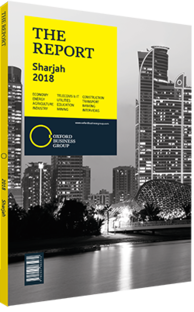Sharjah airport expansion to meet growing demand for low cost and business class segments
Historically Sharjah has been one of the region’s most significant air transport centres, providing both good quality services and rapid access between countries, as well as to neighbouring emirates. Building on this proud history as a regional aviation pioneer, the emirate is now seeking to re-establish its global status, leveraging the growing importance of Sharjah International Airport (SIA).
Rising Demand
The airport first opened in 1977, adding a freight centre in 1979. The airport’s importance in the region was greatly enhanced in 2003 when Air Arabia made the airport its home base. The airline was the first established low-cost carrier in the MENA region and has since grown to serve more than 130 destinations worldwide. The airline carried some 8.5m passengers in 2017, with airline management telling international media in March 2018 that they expected this figure to grow by 7% over 2018. As such the company is undergoing major expansion; while its fleet currently consists of 50 Airbus A320, it holds an existing order for a further 44 such aircraft, with plans to upgrade to the A321neo. Furthermore, plans are also being considered to add Boeing 737 Max or Bombardier C Series aeroplanes to the fleet.
The growth of Air Arabia, which is responsible for most traffic at SIA, dovetails with the broader performance of the airport. Overall passenger numbers reached 11.4m in 2017, a 2.9% increase on the previous year and nearly double the number of passengers in 2012. Furthermore, this growth appears set to continue into 2018, with 1.9m passengers in the first two months of 2018, up 6% year-on-year.
Airport Expansion
With such significant growth under way, the airport is set for major capacity expansion, with the airport forming a key part in the emirate’s plan to boost international tourism revenue. The site was previously enlarged in 2008 and a new 4060-metre runway was inaugurated in 2014, yet passenger numbers have continued to grow.
To meet rising demand, in March 2017 the Sharjah Airport Authority (SAA) appointed Parsons, an international engineering services firm, to manage a Dh1.5bn ($408.3m) expansion project. The multi-phase scheme has the eventual goal of expanding the existing terminal and supporting infrastructure to support a capacity of 20m passengers per year by 2027. The first phase, already visible to passengers and other users of the nearby E88 highway, involves the development of the associated road network, while expansion of the terminal itself is scheduled to take place over a four year period.
The expansion programme also includes major technical upgrades. In December 2017 the UAE Airspace Restructuring Project was implemented, under which separate entry gates, holding points and flight paths for each of the country’s airports have been established. The SIA’s air traffic control tower is also being renovated, along with ground radar, lighting and navigation systems.
At the same time, Sharjah is working to boost its business aviation segment. In July 2017 the SSA signed an agreement with global business aviation services firm Gama Aviation to build a new Dh110m ($29.9m) integrated business aviation complex at SIA. The project is set to cover a 40,000-sq-metre site and provide hangers for a range of business aeroplane models combined with modern services.
Attractive Offering
The expansion of the airport is part of a broader strategy to diversify SIA’s offering. The year ahead will see efforts to attract more airlines to SIA, though management does not intend to out-compete regional players on passenger numbers. “Our strategy will focus on improving and widening the services we provide,” Faisal bin Saoud Al Qassimi, SIA director, told OBG. “We will add more routes and facilities in the terminal and capitalise on our good connectivity and the fact that we can now process a passenger in less than 20 minutes.”
You have reached the limit of premium articles you can view for free.
Choose from the options below to purchase print or digital editions of our Reports. You can also purchase a website subscription giving you unlimited access to all of our Reports online for 12 months.
If you have already purchased this Report or have a website subscription, please login to continue.

